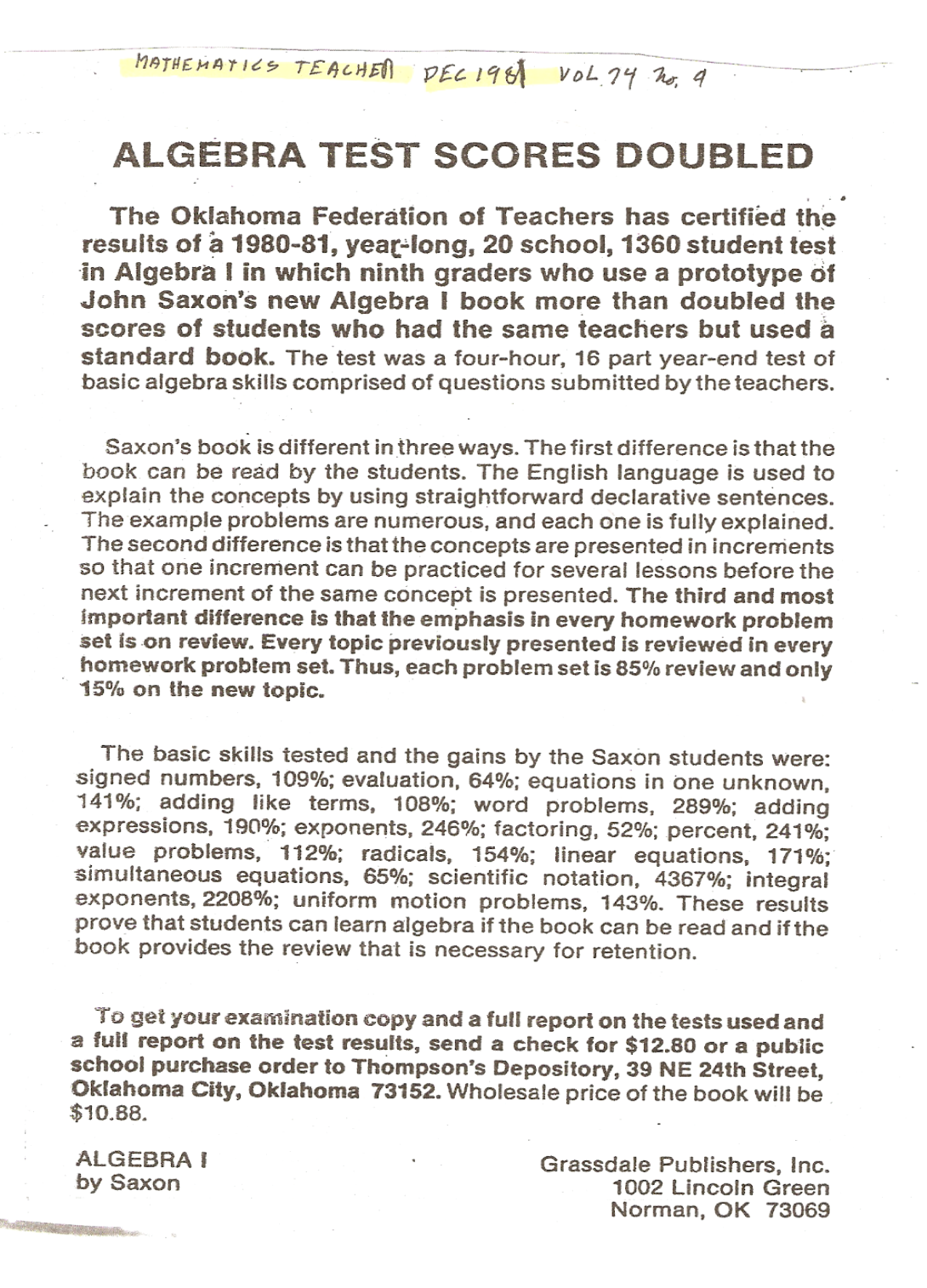![]()
Summary of Saxon Philosophy
- Simple, declarative sentences
- No chapter format with “hunk swallowing” of topics
- Page space used for explanations and multiple examples instead of expensive color or photos
- Incremental development of a concept with understanding its parts (linear progressions) before trying to work with the total concept
- Continual review every day with required homework that has 85% of problems from previous lessons (and no skipping of lessons unless student shows 80% mastery of problems from that lesson; no working “every other” problem)
- Practice with creative problems of repetition for learning, not for drilling
- “Real world” problems replaced with fantasy problems
- Frequent cumulative assessments (after every 5 lessons)
- Rare use of calculator in grades K-5; restricted use in middle school prior to Algebra
- Show 80% competency before moving to next concept
![]()

Saxon’s first national advertisement promoting his Algebra 1 textbook ran in Mathematics Teacher magazine in December 1981. It extolled the success of his Oklahoma pilot project and offered a full report on its results.
This was the “shot heard ‘round the world” for math education establishment leaders. Without seeing a copy of the book, a University of Chicago math education professor wrote a scathing review and urged readers not to buy the book. Saxon responded with an equally scathing rebuttal in a letter to the editor in the following issue.
His response stunned them. No one had ever returned fire against the elite establishment so publicly. But they had attacked a warrior from a world outside the education bubble. For one thing, no one had ever brought the same experience of using “math in the real world” as John Saxon. He also had experience teaching at the U.S. Air Force Academy and had been a flight instructor for young military trainees. He thus was not a novice at teaching.
The war was on. At one point, Saxon shared he was finally in “a good war” because he was getting to fight for children. The war lasted 15 years, until he died in 1996. One gleeful opponent suggested a party be thrown to celebrate his death. Hate for him still lives today among many who train teachers, sell textbooks, or lead/follow the reformists’ dismissal of classical math instruction.
